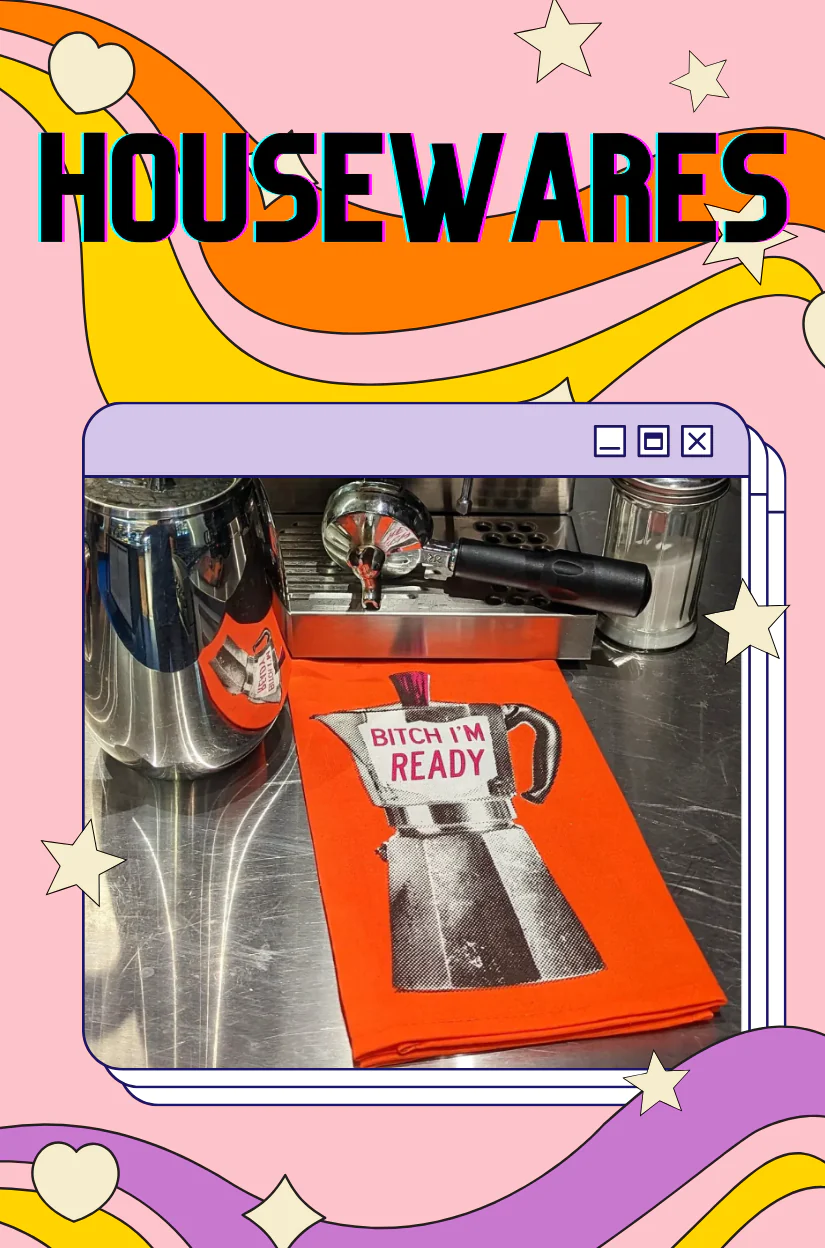This article is more than ten years old. It originally ran on a now-defunct website called The Grindstone. This post was created entirely by humans, as AI didn’t exist back then (but also: why would you want to read something no one could be bothered to write?) For more recent posts, try here.
Musician Kim Boekbinder made news last June when, in response to a show she played for 18 people – netting exactly $12.50, which she spent on whiskey – she announced her new business model:
The problem, as I see it, is that we’re living in THE FUTURE (cue theremin!) with ease of communication, downloadable gratification, large networks, and constant information at our disposal, but we’re still acting like it’s the 1990′s and being a musician driving around in circles is going to help you “Make It.”
…I’m a modern musician with modern tools trying to navigate an old broken system; a system which declared that all musicians must work for free until picked up by a record label which would either make or destroy them; a system which drove a wedge between fans and their music, musicians and their audiences; a system that forgot that the entire reason it existed was to facilitate the experience of art.
Having funded her first album via a Kickstarter campaign (see Bullish: Fund Your New Business Or Get Started Investing in Startups, Part II), Boekbinder decided to apply the same model to touring.
What I do know is that I can start my own system. I can use the tools of communication, networking, and technology to help my fan base be part of my art. I pre-sold my album to fund the recording and now I’m pre-selling shows before I even book them so that I can come and play for my fans wherever they want me to play.
Since launching my first pre-sold show four days ago I’ve gotten letters from venues, fans, and musicians, all thanking me for such a great idea. I wasn’t sure it would work, but my first show got funded in 24 hours and I’m still selling tickets.
I’ve often written about cutting out the middleman (see Bullish: What I Learned About Business from Being a Low-Rent Model), as well as about unusual ways of funding businesses. And the Boekbinder’s eschewing of record labels (and tiny, random shows in clubs) reminded me very much of my own realizations about doing standup comedy. I want to do weird stuff – I have a one-woman show entitled ¡The Punctuation Show! (How to Use Tiny Symbols to Make Meaning Without %$^&#* Up) – and I don’t want to end up doing my nerd-funny Keynote presentation to an empty room, or for a bunch of people who really just wanted dick jokes. I only perform where I’m sure I’m wanted, and in the right place.
I have also long been interested in the 1,000 True Fans theory – the idea that “a creator, such as an artist, musician, photographer, craftsperson, performer, animator, designer, videomaker, or author – in other words, anyone producing works of art – needs to acquire only 1,000 True Fans to make a living.”
Boekbinder, who rose to indie fame after her former band opened for Amanda Palmer, has an ardent fan base. But according to the 1,000 True Fans theory, a True Fan is “someone who will purchase anything and everything you produce.” That’s a high bar.
So, I was intrigued when I got an email from Boekbinder about her new program, Mission Control, in which she asked fans to support the creation of her new album by pledging financial support every month, in increments as small as $10. These backers are rewarded with various levels of goodies, from access to a private blog up to the writing of a custom song and the performing of that song via Skype concert.
I asked Kim if she’d be willing to be interviewed, with the caveat that a Bullish column is going to have to contain details and real numbers. She was game.
Bullish: I assume you’re familiar with the 1,000 True Fans theory. Do you think it’s true that 1,000 true fans is enough to keep an artist afloat? Is 1,000 enough? Molly Crabapple said something insightful the other day about how the 1,000 True Fans idea doesn’t take into account fan turnover, or the idea that fans evolve as people just like you do, and that they like different things at different times.
Kim: 1,000 true fans could be enough to keep an artist afloat. In my current fundraising project – MISSION CONTROL – I have fans giving between $10-$200 a month. 1,000 people giving me $10 a month would fund some really incredible art. In a very direct fan to funding relationship like that I think 1,000 could be quite sustainable.
The reality is that to have 1,000 “True Fans” (those fans who will buy anything you release) you generally need to have a much larger audience. I’m a micro celebrity with a very supportive fan base. I probably have a quite high percentage of “True Fans,” but to attain 1,000 “True Fans” I’ll need to reach millions of people and that’s something that is very hard to do as a truly independent artist. Of course none of us knows what will happen next in our new Internet age.
The 1,000 true fans theory is a catchy headline but a quite complex subject. Musician Robert Rich wrote a wonderful response to the original 1,000 true fans post.
Bullish: Since you’ve been recording music, have you always been full-time? Did you have a day job or temp job at some point? If so, when did you quit? Has money been a serious problem in making music?
Kim: I’m a hundred percenter, to the detriment of my bank account, my personal relationships, and my sanity. So when I decide to do something I do that full time. Of course I generally have several things going full time, but since I chose music it’s been pretty much music 24/7. A few odd jobs here and there, some graphic design work. These days I will write and sell custom songs for people for special occasions if I need the extra cash. There’s enough in a music career to keep me busy and enough income streams that a little bit in each one can keep me afloat.
There have been some scary times, financially speaking. And money problems tend to put a dark filter on one’s world view. I’m lucky to be young, healthy, and without a family depending on me for support or there is no way I could do this. I also don’t mind being broke sometimes.
Bullish: How important is making money? You said earlier – when I asked you about doing this interview – that you weren’t sure that you’d characterize what you do as “making money.” But surely life is easier when the rent is paid, of course. Do you feel like you have to function in seasons or waves — making money then making music then marketing the music, then making money then making music … etc.?
Kim: Having money problems is an awful thing. The constant background dread of not knowing if you can make your rent or eat or pay for public transportation is nauseating and draining. So making money is part of my goal. Also, art is an expensive mistress. The money I make in a year would be a pretty good living if I weren’t running a business. But I spend every cent on the music. Recording and touring are expensive.
I certainly wouldn’t advocate music making as a great way to make money. Some people do make money from music. Some people can make money at everything. But as a way to pay bills and save money it’s not a great option for most of us.
Bullish: Tell us about Mission Control. How did you get the idea? You mentioned in one of your emails that you didn’t think you could fund a project on Kickstarter, since you didn’t even know what you were going to write songs about yet.
Kim: MISSION CONTROL is basically a backstage pass to my writing process as I develop my next album. Fans give me $10-$200 a month for access to a private website where I post new songs, research, videos, and blogs. I knew I needed time to develop my next album but didn’t know how I could afford it. I was also feeling sick of the constant promotion it takes to be a successful artist, always pushing, always angling, always talking about what I’m doing, worrying about download counts and how many people are sharing, Tweeting, caring. So I developed MISSION CONTROL.
If putting everything out on the Internet at large is like playing a gig on the sidewalk and trying to gather a crowd through sheer determination, then this is my Internet equivalent to playing a gig in a venue. I’m playing to the people who care enough to see what’s going on now in the development stage. Those who understand the value of nurturing art at all stages.
Kickstarter and other crowd funding options are great once you have some material and are ready to promote the hell out of something. I’ll certainly be returning to Kickstarter in the future, but for now MISSION CONTROL is saving my life.
Bullish: How many backers do you have? If you don’t mind telling us, how much money are you bringing in? (I admire your ingenuity in doing this, and the more details you can share, the more I hope this will benefit the creative ladies who read this!)
Kim: I have 68 backers. I’ve limited this first stage to 100 backers and it’s been up for a month and a half so I’m pretty happy with the 68. I’m making about $1400/month off MISSION CONTROL which pays for new instruments, studio space, recording costs and living expenses. I’ve also had a few people buy me instruments off my wishlist.
Honestly, I’m struggling a bit. I’m in Melbourne to develop the album and be with my main squeeze and this is a very expensive city. But I also feel very lucky to be taking a vacation from self-promotion (ha! What interview?) and developing a new album without worrying too much about food and bill paying.
Those 1,000 fans are sounding pretty good right about now….
Bullish: How much do you communicate with the backers? What do you think motivates them to participate?
Kim: I blog a few times a week. I post videos of me writing new songs or doing happy dances when I get new instruments. I tell them stories I can’t or won’t tell the rest of the Internet (about how my house was almost burned down recently or what the back story is on a song.)
MISSION CONTROL caters to several types of people.
There are the fans who want to know everything, every note, every detail, every source for every lyric. There are people who understand how important creative development is and want to help me do that. And there are a few legacy supporters who have been giving me money every month for the last few years – since my last album fundraiser. Those few champions have helped me pull through some lean times and funded some music I’m really happy with.
Even though I’m still engaging with fans and posting things regularly it feels much more relaxed and comfortable than the usual GO GO GO of promotion. It’s part of my job to keep things moving on the MISSION CONTROL site but I don’t worry about how many people are looking at it or downloading. Sometimes we have chats in the forum, or on the blog comments, sometimes no one says anything for a few days. And it’s great to just know that people are happy to be part of something as nebulous as an album that doesn’t even exist yet.
Bullish: A theory I’m working out these days is that, in so many fields, the difference between making money or struggling is whether your work is constantly all about you, or whether your work is more and more about other people. For me, I started doing much better when I stopped doing standup and started helping people in the education field and in these columns. Is there any truth in this for you? Of course you make music based on your own inner world, but people buy music for their own purposes — because it makes them feel a certain way, contributes to their identity, etc. Do you just make the music you want to make and, happily, people like it, or are you thinking about a particular audience?
Kim: Most musicians I know teach music. That’s how they make money, the shows are important but not the main money maker – even though that’s always the dream. Those who don’t teach might write music for commercial clients. My old neighbor wrote all the music for Farmville – borrowed our banjo for months. So yes, I think it’s much easier to make a living and a community and probably a well-balanced life by making your work about other people: teaching, writing for hire, etc….
The hope for artists is that what we are doing for ourselves will be valued by other people enough that the work transcends to being about more than the single artist. We hope to inspire people and in so doing make some sort of living at our art. And society needs artists. We need those few individuals who are driven or selfish or crazy enough to do something that is “all about them” so that we have something beautiful that is about all of us.
Bullish: Anything else I didn’t ask? Advice for artists looking to keep the bills paid (or better)?
Kim: Sometimes being an artist feels like being willfully delusional. You just step off the cliff of security, out into the unknown and you work and work and work and work. And it all goes fine until you look down… and realize there is nothing to catch you if you fall. It’s scary. Really scary. But if you can keep going, getting better, making more connections, valuing your work and the work of those around you, building your community of supporters and peers, someday your delusion of being successful may not be a delusion anymore.
Oh, and one other thing: “success” is a tricky word. Many people are well known and flat broke. While others are rolling in cash but have no purchase in the minds of the public. Just because you’ve heard of someone doesn’t make them a success in all ways, and conversely just because you haven’t heard of them doesn’t mean they’re not successful. So define your own success and then go for it.
Bullish: Thanks, Kim!
For more on getting your empire going while preserving your gravitas, see Bullish: How to Make a Career Out of the 10,000 Things You Want to Do, How to Start a Business When You’re Broke and Bullish: How to Make Money as an Artsy-Artist Commie Pinko Weirdo, Part I and Part II.










